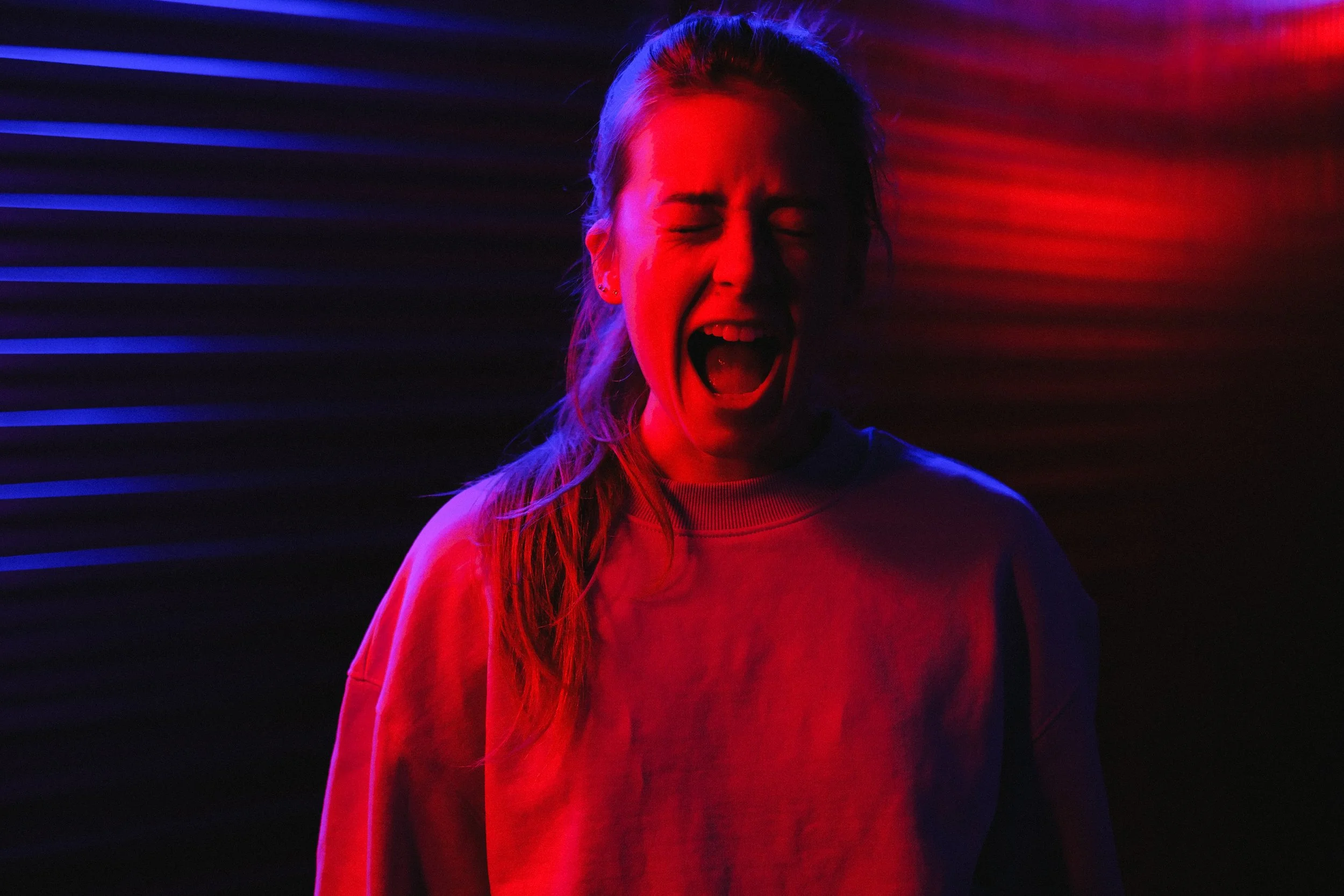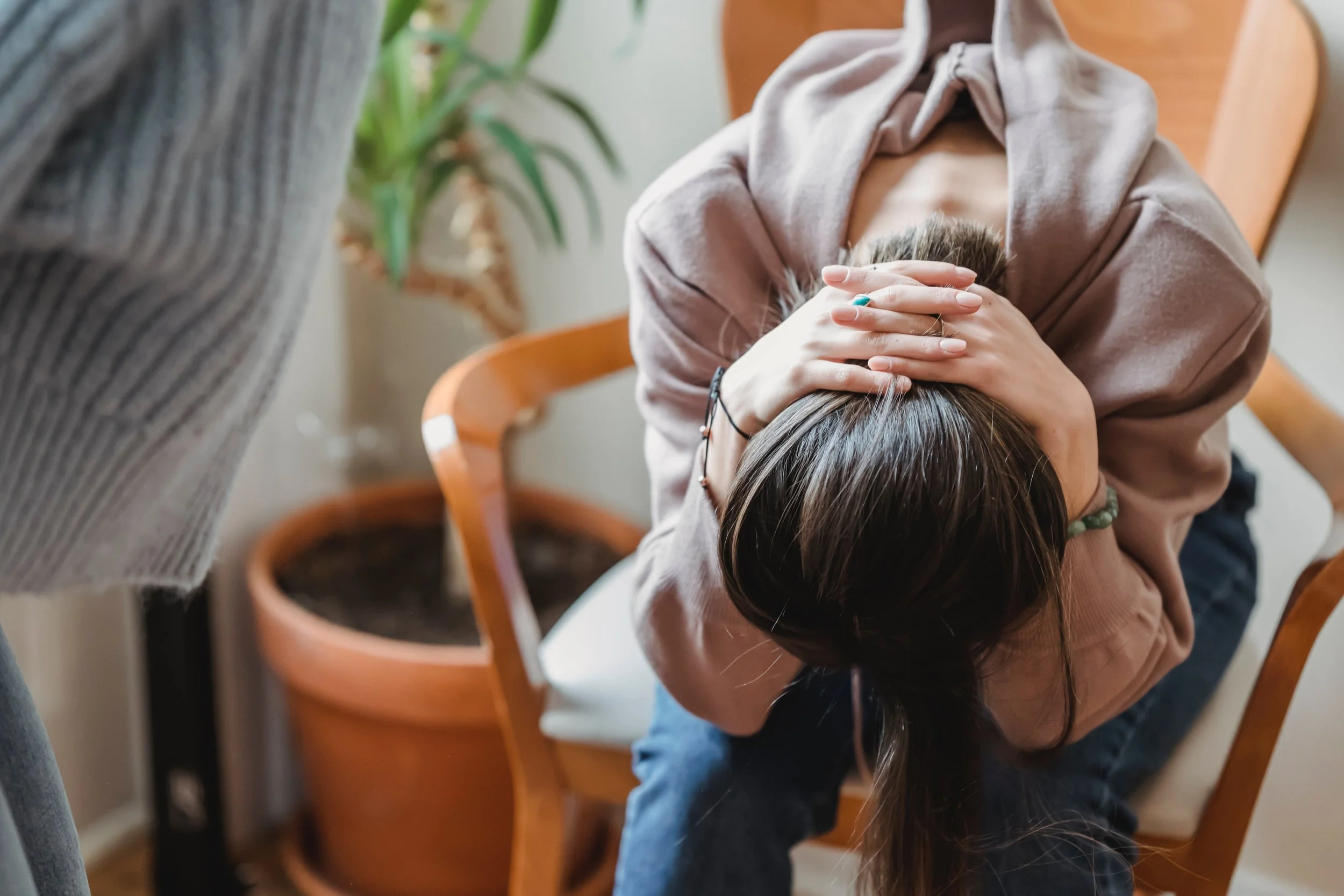“The only thing we have to fear is fear itself.” We’ve all heard this famous quote from Franklin Roosevelt before. And it’s a great message, right? Often, our fear holds us back from doing things that really wouldn’t be so scary, if only we faced our anxiety head on. But when a child is dealing with Panic Disorder, the “fear itself” is pretty terrifying! Sweaty palms, a racing heartbeat, rapid breathing, and lightheadedness can make kids feel like the world is about to end.
Fear not! This post will take a deep dive into panic disorder, so you can feel confident navigating your child through their next wave of panic. We’ll talk about how panic disorder works, review common signs and symptoms, and discuss what parents (and professionals) can do to help.
What is Panic Disorder?
Panic Disorder is a type of anxiety disorder that can affect both kids and adults. It’s much more common in teens than in younger kids, but can strike at any age. People who have panic disorder have experienced panic attacks (also called anxiety attacks), and struggle with the fear of having another one.
Panic attacks come on suddenly, and may or may not have a clear trigger. A child may have a panic attack because they’re extremely anxious about boarding an airplane: in this case, the trigger is clear! But a child could also have a panic attack come on seemingly out of the blue, while relaxing at home or hanging out with friends. Sometimes, panic attacks can even wake a child up in the night!
Panic attacks are frightening, and it’s common for kids (and even adults) to worry they mean something’s seriously wrong. The physical symptoms can feel like you’re losing control of your body and mind. Children may worry they’re having a problem with their heart or lungs, or might even fear that they’re dying or going crazy.
Understandably, kids who’ve had a few panic attacks can get really worried about having another one. Sometimes this leads to desperate attempts to avoid things they think might trigger a panic attack, or to stay away from places where they think nobody will be able to help them. When this starts getting in the way of life, we call it Panic Disorder.
How is Panic Disorder Different Than a Regular Panic Attack?
Many people have panic attacks: up to 35% of people will have one at some point in life. They can happen as a part of other anxiety disorders, like social anxiety, generalized anxiety, phobias, or even OCD. They can also happen by themselves, without any other mental health problems.
Panic disorder, on the other hand, is much less common. It affects about 4.7% of U.S. adults and about 1-3% of kids and teens. For kids with Panic Disorder, the panic attacks are the source of anxiety. Kids are worried about having more attacks, of something bad happening during an attack, or of having a panic attack in a place where they’re not able to get help.
If a child is worried about something else—dogs, germs, other kids judging them—and they’re having panic attacks as a result, that’s not Panic Disorder. If a child is worried about the panic attacks themselves, and is trying to avoid them in unhelpful ways, that’s Panic Disorder.
What Are the Symptoms of Panic Disorder?
To get a diagnosis of panic disorder, kids need to have had more than one panic attack. A panic attack is a sudden, unexpected burst of extreme anxiety or fear that only lasts a short time, usually 10-30 minutes.
They don’t always have a clear cause and may seem totally out of the blue. During a panic attack, a child may notice 4 or more of the following symptoms:
Sweating
Shaking
Rapid or pounding heartbeat, or feeling like the heart is skipping a beat
Chest pain or pressure
Upset stomach
Feeling short of breath or like you can’t breathe
Strange sensations, like heat, tingling, or numbness
Feeling dizzy or lightheaded
Feeling detached from reality
Feeling as though something really bad is about to happen (impending doom)
Essentially, a panic attack sends your body into full on fight-or-flight mode with no warning, which causes these intense physical symptoms. Kids with panic disorder become so afraid of these attacks that they go to great lengths to try to prevent them from happening. This means you’ll also see the following:
Worries about having another attack
Concern about the meaning of the panic attacks or negative consequences they could cause
Trying to avoid or prevent attacks in ways that lead to significant behavior changes
Once these symptoms have happened for at least a month, a child can be diagnosed with Panic Disorder.
Signs of Panic Disorder in Kids
Panic attacks might be easier to spot than some other forms of anxiety, but Panic Disorder can still look different for each individual kid. If you’re beginning to suspect panic may be to blame for your child’s difficulties, here are three examples to consider.
Maya has had a handful of panic attacks over the past few months: her hands start to sweat, then she starts hyperventilating and crying. She was sitting in Biology class one day when she noticed her palms getting sweaty, and asked her teacher if she could leave class. Her teacher asked her to wait for another student to return from the bathroom, and Maya had a panic attack. Maya’s teacher has apologized and reassured her that this won’t happen again. However, Maya doesn’t want to go back to class for fear that she’ll have another attack.
Mateo has heart palpitations with his panic attacks, and gets a terrible feeling like something bad is going to happen. He’s gone to the doctor for a checkup and has a clean bill of health, but he can’t shake the feeling that his panic attack could turn into a heart attack. He worries about this possibility all the time, and asks his mom for reassurance that there’s nothing wrong with his heart. Every time he feels the slightest twinge in his body, he worries it means another panic attack is coming.
Ash has only had a couple panic attacks, but they really left an impression on her. Each one felt like an emergency, and luckily her mom was close by to help. Even though she hasn’t had one in a little while, Ash is really nervous about going to summer camp or sleepovers with her friends, because she’s anxious about having a panic attack away from home. She worries what her friends would think, and who would help her to calm down. Ash friends have noticed she’s turning down their invitations, but Ash is too embarrassed to tell them why.
Even though their symptoms are different, all these kids are struggling with repeated, unexpected panic attacks. As if that wasn’t enough, their anxiety about the attacks is so big that it’s getting in the way of important parts of life.
What Do I Do If I Think My Child Has Panic Disorder?
If you’re concerned your child is having repeated panic attacks, it’s a good idea to check in with their pediatrician first to make sure what you’re dealing with is really anxiety-related. There are some medical conditions that can mimic panic attacks, and you’d hate to brush something off as “just anxiety” that could be made better with medical care.
Conditions like tachycardia and POTS can affect your heart rate and blood pressure, causing palpitations and dizziness. A child complaining of shortness of breath should be checked out for asthma, just in case. The cause could even be as simple as having too much caffeine: it’s hiding in all kinds of sports drinks and energy bars these days, and it’s so effective at triggering panic attacks that scientists use it when they want to research panic.
Once you’ve ruled out any underlying medical stuff, you can rest assured that as scary as your child’s panic attacks may be, they’re totally safe. Many children worry that panic attacks will cause serious harm or lasting damage. Knowing this isn’t the case can be a relief.
Next, take a look at some of the strategies below to help your child cope with panic and get back to enjoying life.
Helping a Child with Panic Disorder
You've learned the symptoms, you’ve ruled out any medical causes…now that you’re sure this is Panic Disorder, how can you help your child cope? It’s painful to watch your child go through debilitating anxiety, and emotionally exhausting for everyone involved.
Fortunately, Panic Disorder is very treatable! We have ways to help kids and teens who are dealing with panic, and we know they work. Here’s how a parent or caregiver can help a child through panic:
Educate Your Child About Panic Attacks
Part of what makes panic attacks so scary is how mysterious they are. They seem to come out of nowhere, with little to no warning. Even if they aren’t dangerous, they feel like they are. It’s important for kids to know that panic attacks are not dangerous, and that they’re the result of their body doing the right thing at the wrong time. The symptoms kids feel during a panic attack are the result of their fight-or-flight response kicking in, which exists to help us escape life-threatening situations. We want to be able to feel that adrenaline rush when we really need it—just not on the school bus.
Practice Regular Relaxation
It never hurts to learn new ways to calm down your body and mind, especially when you’re dealing with any form of anxiety disorder. Coping skills like deep breathing, muscle relaxation, and guided visualization really can help a lot of kids—but they work better when you practice them regularly, instead of trying them only when you’re panicked. Just like with any exercise, regular practice helps your child’s nervous system get better at coming out of fight-or-flight mode and returning to calm. Download my free guide for more ideas!
Use Grounding Skills When Panic Strikes
Many kids find that typical relaxation skills don’t work super well in the midst of a panic attack: it’s hard to get all noodly when there’s adrenaline coursing through your body. Your child may find they have better luck with grounding skills. These skills give your child something to focus on outside of themselves, so they’re not just fixating on their body sensations and anxiety. Any kind of strong sensory input, like holding an ice cube, tasting a sour candy, or splashing your face with cold water can be helpful for grounding.
Accept That Panic Happens
You may be surprised to learn that our goal when treating Panic Disorder is not to eliminate panic attacks from a child’s life. That’s like trying to keep yourself from ever sneezing again: it’s a bodily function that’s mostly outside of your control. The more time we spend stressing about panic attacks, the more anxious we become. Interestingly, the more kids accept that panic sometimes happens, the fewer attacks they tend to have. You can remind your child that although panic attacks stink, they’re manageable, they’re not dangerous, and they always end.
Approach, Don’t Avoid
Kids with Panic Disorder are so fearful of having another attack that they change their behavior and routines to try to protect themselves. This can look like avoiding places where they’ve previously had an attack, repeatedly checking in with parents about their worries, monitoring their body for signs of panic, or saying no to activities that feel too risky. The more kids avoid these places and activities, the worse their anxiety is likely to become. Over time, the list of “dangerous” places can get longer. We can help kids overcome their anxiety by gently helping them return to these off limits places, so they can prove to themselves that they’re not so dangerous after all.
Panic Disorder Therapy for Kids
You don’t have to keep living in fear of your child’s next panic attack. In addition to the tips above, meeting with an anxiety therapist can help your child recover from Panic Disorder and learn skills they can use to manage anxiety as they grow. Cognitive Behavioral Therapy is often called the “gold standard” for anxious kids because we have lots of research to show how effective it is. It’s my first recommendation for families looking for help with panic.
Many “find a therapist” directories allow you to search for therapists who use specific forms of therapy, so you can specifically seek out counselors who practice CBT. This kind of therapy is very focused on education and skills. You can expect to get “homework” to practice with your child between sessions, and to be involved in your child’s therapy process. Happily, kids who learn CBT skills often move through therapy a little more quickly than kids who do not.
I love using CBT to help kids with anxiety, both in my therapy office and online. This kind of skills based counseling works great over telehealth, especially with kids ages 8 and up. If you’re located in the Charlotte area, I’d be happy to meet at my Davidson office. If you’re somewhere else in North Carolina, New York, or Florida, I offer virtual sessions using a secure platform that works just like Zoom.
Ready to get started? Send me a message. You can also download my free anxiety guide to learn more coping skills you can start using right away.





